Keela cabbage: a description of the disease, effective methods of prevention (protection) and control
Your cabbage grows poorly (heads of cabbage are not tied), it is constantly hit by the keel, isn't it? Indeed, some even experienced gardeners were so tortured by the keel that they even think about completely abandoning the planting of cabbage.
After reading this material, you will learn about how dangerous the keel of cabbage is, what effective methods exist for preventing and combating this fungal disease.
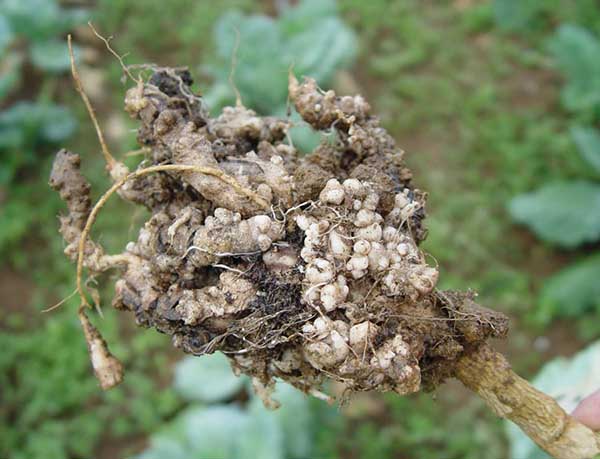
Content
What is cabbage keel: causes, manifestation features, favorable environment for development
Keela is the most harmful and common disease of all cruciferous crops (cabbage, radish, radish, daikon, turnip, swede, mustard, rape, etc.).
Important! The most common varieties of cabbage - white cabbage and cauliflower - are most often and most affected by the keel.
The causative agent of the disease is the fungus Plasmodiophora brassicae Woronin, which lives in the soil (= soil fungus). The germination of its spores is triggered by the root secretions of cruciferous plants.
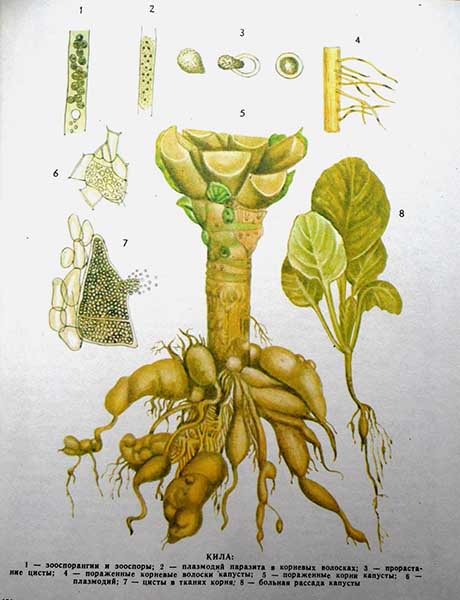
Unfortunately, most acidic soils are infected with keel (fungal spores).
In other words, the keel of cabbage is most common in the North-West (in the Leningrad region).
The disease spreads very easily and quickly throughout the site, while the spores themselves in the soil are spread by earthworms, various soil insects, and streams of water. Often the mushroom is introduced into the soil with already affected seedlings, i.e. fungal spores were originally in the potting mix (which was not disinfected).
Advice! Therefore, you should carefully examine the plants (more precisely, their root system) before landing in the ground, especially for purchased seedlings.
The symptoms of keela are as follows:
- On the roots of seedlings affected by the fungus, white growths (swelling or thickening) of various shapes and sizes (size) appear.
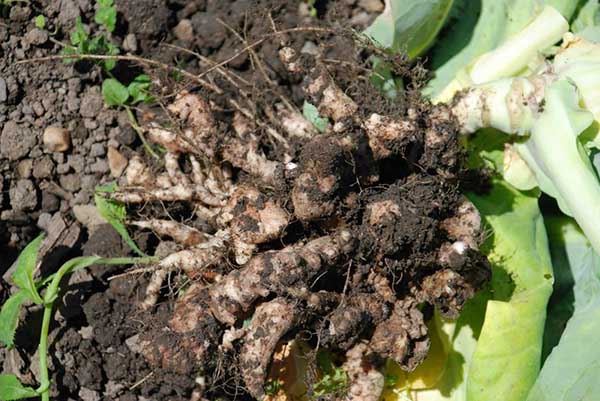
- If the infection of cabbage with keel has occurred yet at the seedling stagethen on the main roots formed large swelling.
- If healthy seedlings are cabbage was planted in keel-infested soilthen on lateral roots formed small thickenings in the form of icicles and beads.
- As a result, the number of root hairs decreases, due to which the plant begins to experience strong oppression (cabbage leaves become lethargic, especially in the heat, turn yellow), because the roots cease to provide the above-ground part of the plant with water and food (macro- and microelements).
The seedlings affected by the keel stop developing normally, and the heads of cabbage may not start at all.
Thus, the earlier the infestation of keel occurs, the more damage can be done to your plants and crops.
- Saplings affected by the keel at the seedling stage, after planting in open ground, simply do not take root, they can be easily pulled out of the soil (in other words, the seedlings can be thrown away).
- And those who were struck by the keel after planting seedlings in the contaminated soil, although they tie the heads of cabbage, are very small and loose.
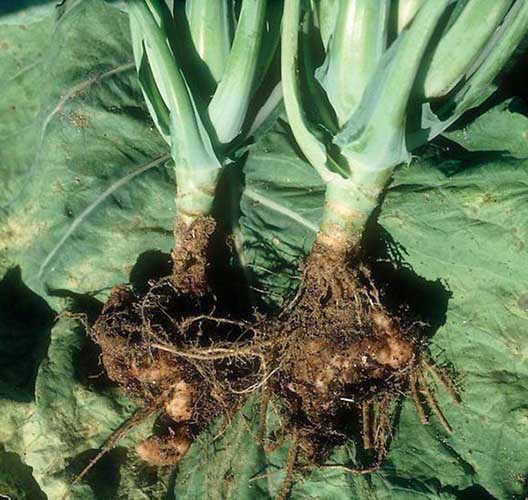
However, dead seedlings and / or low yields are not so bad. The main danger is that after the growths rot and burst (collapse), respectively, a huge amount of spores will be released and fall into the soil, which can calmly stay in the ground for up to 5-7 years. And as soon as any plant from the cruciferous family gets to this place, then with its root secretions it will provoke the germination of spores and a new outbreak of the keel.
Favorable conditions for the development of keels:
- moderate temperature - +18 .. + 24 degrees;
- high soil moisture (75-95%);
- soil acidity, close to neutral (pH 5-7).
Note! According to experimental data, the development of the disease stops when the soil temperature drops below +15 degrees, humidity values are less than 50% or close to 100%, as well as when soil acidity is above pH 7-7.2.
Also, the development of the disease is facilitated by a deficiency in the soil:
- calcium, potassium, zinc, boron and chlorine;
- low (less than 2.5%) humus content;
- frequent waterlogging and drying out.
Accordingly, the only effective measure for the prevention and control of cabbage keel is maintaining the necessary (slightly alkaline) acidity of the soil, since the causative agent of the disease (fungus) dies when the soil acquires a more alkaline reaction (Ph more than 7-7.2), as well as the introduction of especially calcium fertilizers and organic matter (humus, compost).
However, there are other relatively effective measures for the prevention of kale, including planting a disease-resistant variety (hybrid).
How to prevent the disease of keela: methods of prevention and control
The following agrotechnical measures will help you prevent the kale from being damaged:
- compliance with the rules of crop rotation and crop rotation;
- maintaining slightly alkaline soil acidity (optimal acidity for growing cabbage - Ph 7-7.2);
- the introduction of calcium fertilizers, as well as organic matter (humus, compost);
- processing of soil and roots of seedlings with Phytosporin and sulfur-containing preparations;
- planting disease-resistant varieties and hybrids;
- disinfection of the substrate for growing seedlings;
- processing (disinfection) and careful culling of seedlings (with diseased roots);
- burning plant residues.
You should also fight cruciferous weeds.
Compliance with crop rotation
As you know, if you grow crops of the same family on the same bed every year, then over time the soil will not only deplete, but the same pathogens (fungi) and larvae (eggs) of pests, which are most susceptible to, will also accumulate in it. plants of this family.
Therefore, if you want to follow the rules of crop rotation, then in no case it is impossible to grow cabbage and other crops of the cruciferous family for several years in a row (radish, radish, river, dyke) in the same place... You need to alternate cultures from different families. Moreover, the culture should be returned to the same bed only after at least 4 years, and preferably 5-6 years.
So, good precursors for cabbage will be legumes (beans, peas), pumpkin and melons (cucumbers, zucchini, pumpkins, watermelons, melons), as well as cereals (except for corn).
At the same time, some crops are even able to free (heal) the soil from keel spores, namely families:
- nightshades (tomatoes, peppers, eggplants, potatoes, etc.);
- onions (onions, shallots, garlic).
- haze (beets, etc.).
Important! The most effective crops to cure keela soil are tomatoes and spring garlic.
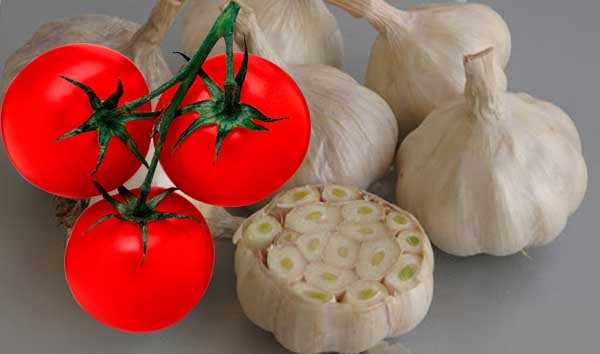
It is known to be very good every year sow green manure beds (in autumn after harvest and / or in spring before planting crops), which not only improve the structure and fertility of the soil, but are also able to disinfect it.
However! Cabbage and other crucifers not worth planting after sideratesbelonging to the cruciferous family: mustard, oil radish, rapeseed and rapeseed (rape).
Soil deacidification
As you already found out, the causative agent of cabbage keel (mushroom Plasmodiophora brassicae Woronin) develops only in an acidic environment, so acidic soils must be deoxidized before planting cabbage, and this must be done in advance, at least in the fall.
Note! The site has a separate article about how to change the acidity of the soil (deacidify or, conversely, acidify).
As a rule, the following lime materials are used to deoxidize the soil (they also say "liming of acidic soils"):
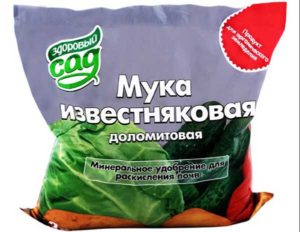
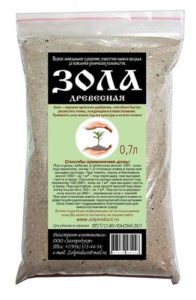
- Slaked lime (fluff);
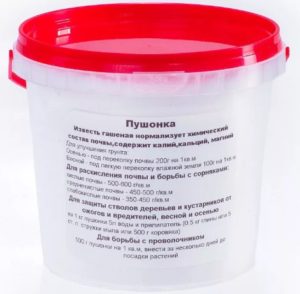
- A piece of chalk;
- Gypsum;
- Any other special deoxidizing agent (for example, Lime-Gumi deoxidizer, which, in addition to direct deoxidation, also heals and increases soil fertility).
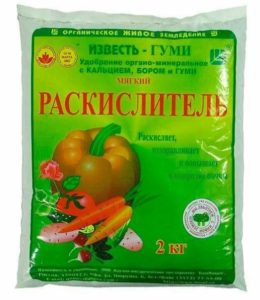
Important! No way to deoxidize the soil don't use baking soda! The fact is that an excess of sodium in the soil has a very bad effect on its physical properties.
Calcium nitrate
Instead of adding lime materials to the soil, you can try adding calcium nitrate to the garden bed, and directly into the hole when planting (planting cabbage seedlings), about 1 tbsp. spoon (mix with earth). Similarly, you can make wood ash or dolomite flour (1-2 tablespoons each).
In general, calcium nitrate is also a soil deoxidizer (being physically alkaline fertilizer), because contains calcium.
But even more important is the fact that it is calcium deficiency that contributes to the defeat of the keel.
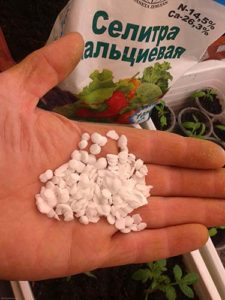
Fitosporin
For the prevention of keels the day before planting seedlings in the ground You can shed seedlings Fitosporin solution or downright hold the roots in the working solution.
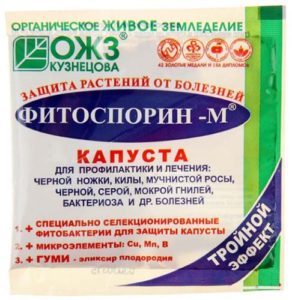
Colloidal sulfur (Tiovit Jet)
It is believed that it is also effective to use sulfur-containing preparations against the keel (pour into the holes before planting seedlings):
- colloidal sulfur;
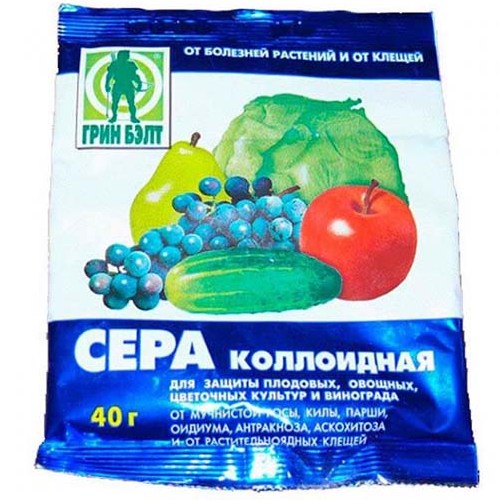
- Tiovit Jet.

Keel-resistant cabbage varieties
Alternatively, you can plant the most disease-resistant cabbage varieties, which include:
- Foreign breeding hybrids: F1 Amerigo (colored), F1 Clapton (colored), F1 Clarify (colored), F1 Kilaton (white), F1 Kilagebr (white), F1 Kilagreg (white), F1 Tequila (white), etc.
- More traditional varieties of domestic selection (all white): Losinoostrovskaya 8, Taininskaya (both mid-season), Zimnyaya Gribovskaya 13, Moskovskaya late 15, Moskovskaya late 9 (all late).
F1 Kilastop is a new stable hybrid from Semko.
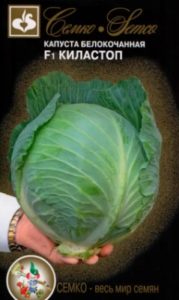
What to do with cabbage seedlings infected with keel, can they be cured
No, nothing can be done (the disease can only be prevented, preventive and protective measures can be taken, but not to fight the symptoms). You just have to dig it up and throw it away, and it is advisable to take it out as far as possible from your site, and even better burn it. The contaminated soil should be spilled with a solution of copper sulfate or Fitosporin (for disinfection) and be sure to lime (deacidify).
In other words, everything is the same as in the case with black leg.
Well, now you know for sure everything about the keel of cabbage, by far the worst disease of cruciferous (cabbage) crops. Watch the acidity of the soil, apply calcium fertilizers, organic matter and harvest large yields of juicy and large heads of cabbage.
Video: keela cabbage - description of the disease and control measures

